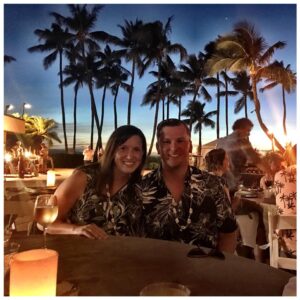By Marc C. Shaffer
I still remember the moment I stopped making excuses and finally booked my first international trip to Hong Kong and China.
For years, I had every reason not to go:
“I don’t have the time.”
“It’s not in the budget.”
“Maybe next year.”
Sound familiar?
Eventually, my mentor, Mike Searcy, looked me in the eye and said something that stuck:
“If you keep saying that, you won’t end up traveling very many places in your life.”
That hit hard. And it pushed me over the edge.
So I did it. I cleared my calendar, scraped together my savings, and booked the trip. I spent nearly every dollar I had at the time. And while the trip didn’t break me financially, I definitely came back without an emergency fund and a whole lot of financial vulnerability. But I was living on a high, a high from “memory dividends,” the kind of return you can’t measure in numbers.
That trip changed everything. It opened my eyes to what I’d been missing and made me vow to never let “someday” be the plan again.
Instead, I made travel a budget priority. I began pre-saving for international trips each year. I set money aside monthly and treated those upcoming experiences with the same importance as any other financial goal.
That mindset shift led me to what I now call the Reverse Travel Budget, a simple and empowering framework to turn your dream trips (or any other savings goals) into real plans.
Start With the Dream
 A reverse travel budget flips the script. You don’t begin by asking, “What can I afford?” You start with “What do I want to experience?”
A reverse travel budget flips the script. You don’t begin by asking, “What can I afford?” You start with “What do I want to experience?”
Ask yourself:
- Where do I want to go?
- What kind of trip would light me up?
- Who do I want to go with?
- How long should I stay?
- What would make this trip unforgettable?
Whether it’s a solo sabbatical, a family trip to Disney, or a culinary tour of Europe, start with the vision. Don’t let your current account balance limit your imagination. That part comes later.
Estimate the Full Cost
Once you’ve painted the picture, start assigning numbers to it:
- Flights: Use Google Flights or Hopper to get a sense of pricing.
- Lodging: Check Airbnb, Booking.com, or hotel sites.
- Daily expenses: Factor in food, transportation, entry fees, and fun extras.
- Hidden costs: Don’t forget about travel insurance (I always recommend it), currency exchange, souvenirs, and tips.
Add it all up, and you’ll have your target savings number.
For example, let’s say your trip to Italy totals $10,000. Instead of shelving the idea, you now know what it will take to make it happen.
Set a Timeline and Save Backward
Let’s say you want to take that Italy trip 18 months from now. Divide your target cost by 18 months:
$10,000 ÷ 18 = about $555 per month.
Can’t save that much monthly? No problem. Stretch the timeline to 24 months, and you’re saving about $417 per month. Having that clarity gives you options.
Personally, I now plan for one international trip each year. I know roughly what I’ll need and divide that amount by 12. That monthly amount goes into a dedicated savings account automatically. When the trip arrives, I’m ready, no financial stress, no dipping into emergency funds, and no regrets.
Build the Budget Around Your Life
 Rather than seeing travel as an afterthought or luxury that only happens if there’s money left over, flip the narrative. Treat it (or the savings goal of your choice) as a core value you’re budgeting for, not around.
Rather than seeing travel as an afterthought or luxury that only happens if there’s money left over, flip the narrative. Treat it (or the savings goal of your choice) as a core value you’re budgeting for, not around.
You can:
- Open a dedicated “Travel Fund” savings account
- Set up auto transfers to make saving frictionless
- Allocate windfalls, such as bonuses or tax refunds, to boost your fund
If travel matters to you, it should show up in your budget.
And if you’re looking for a smart way to let your travel savings work for you in the meantime, Flourish Cash is a great option to consider. It’s a high-yield cash management account that offers a competitive interest rate while keeping your money liquid and accessible, making it attractive for short-term goals like travel. Unlike investment accounts, Flourish allows you to pre-save with both confidence and flexibility.
Maximize Travel Perks with the Right Credit Card Strategy
Another great way to stretch your travel dollars is by using a credit card that offers travel rewards, points, or cashback. When used responsibly and paid off each month, the right card can be a powerful part of your reverse travel budget strategy.
 When my wife and I booked our honeymoon, we were excited to learn that Southwest Airlines had just started offering flights to Maui, our dream destination. We reworked which credit card we were using most heavily and focused our spending to earn the Southwest Companion Pass, a perk that allowed one of us to fly for free on every trip we booked.
When my wife and I booked our honeymoon, we were excited to learn that Southwest Airlines had just started offering flights to Maui, our dream destination. We reworked which credit card we were using most heavily and focused our spending to earn the Southwest Companion Pass, a perk that allowed one of us to fly for free on every trip we booked.
That free flight was a total game-changer. It gave us the flexibility to upgrade other parts of the trip and, honestly, sip a few extra Mai Tais by the pool. 🍹😄 It was also a great example of how strategic spending, paired with thoughtful planning, can unlock big travel wins.
We even hope to take our kids back there someday, and knowing that perks like this exist makes those goals feel even more achievable.
If you’re planning a trip and have time to plan ahead, it’s worth looking into which cards align with your goals. Some offer generous sign-up bonuses, airline miles, hotel rewards, or travel credits. Just make sure to factor in any annual fees and always pay off your balance monthly so the rewards don’t get canceled out by interest.
Beyond the Landmarks: What You’re Really Investing In
When people hear about my travels, they often ask what my favorite experiences have been. Yes, there are iconic moments – reaching the top of Machu Picchu, standing on the Great Wall of China, hiking in Patagonia.
But the things that stick with me the most aren’t those postcard moments. They’re:
- The friendships built with travel mates and locals
- The unexpected conversations in markets and airports
- The physical and mental growth from tough hikes and long journeys
- The cultural exchanges that showed me that, all around the world, people value security, friendship, and family
Those experiences have shaped me far more than anything I could’ve bought with that money. Travel has given me perspective, empathy, and purpose – returns that continue to pay off.
Design a Life That Reflects What Matters Most
 As a financial planner, I often see people who work hard their whole lives with the idea that they’ll enjoy it all “someday.” But someday isn’t guaranteed.
As a financial planner, I often see people who work hard their whole lives with the idea that they’ll enjoy it all “someday.” But someday isn’t guaranteed.
If you don’t prioritize your time, attention, and money around the things that matter most to you, they can slip through the cracks.
That’s what the Reverse Travel Budget is all about – reclaiming your dreams and planning for them with intention.
What’s on Your List?
What are the most important things in your life?
Is your financial plan designed to help you live those things, not just eventually, but now?
Let’s build a plan that supports the life you want, not just someday, but starting now.
Full Circle: Start With the End in Mind
That first trip to Hong Kong and China taught me that waiting until the “perfect time” usually means waiting forever. I didn’t have the money set aside. I didn’t have a fully formed plan. But I had a vision, and that was enough to take the first step.
Now, I do it differently. I still start with the vision, but I build backward. I assign a cost, set a date, and create a path. That’s the magic of the Reverse Travel Budget. It turns dreams into timelines and “someday” into soon.
So don’t let your bucket list collect dust. Start with where you want to go. Then, plan your way there; intentionally, with a plan that reflects the life you want to live.

